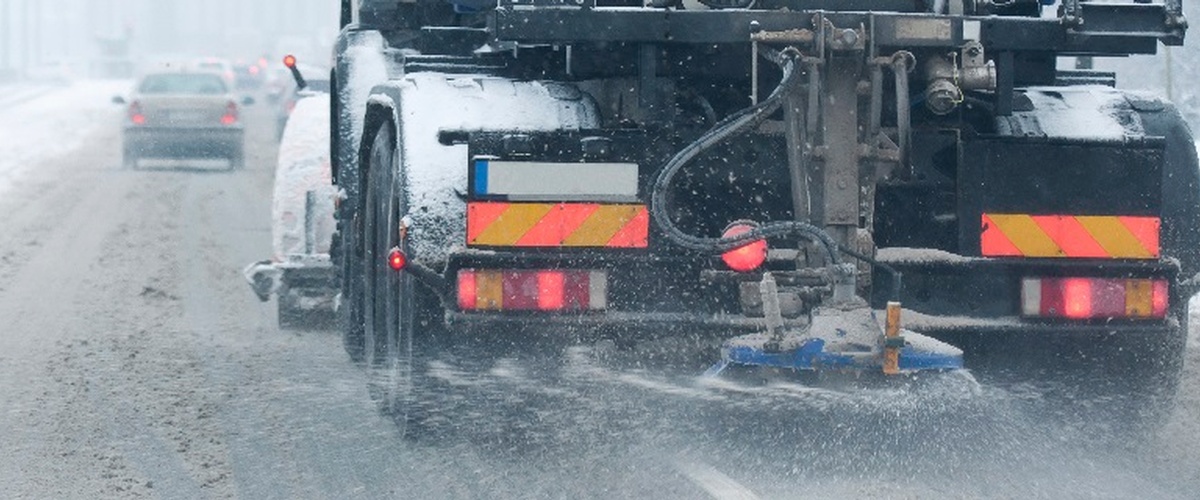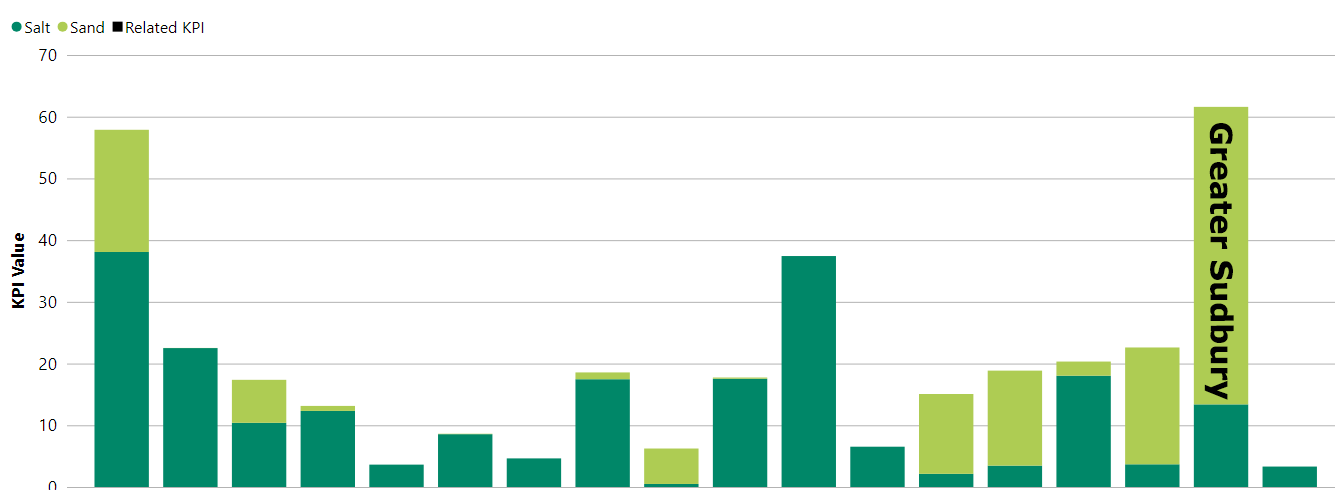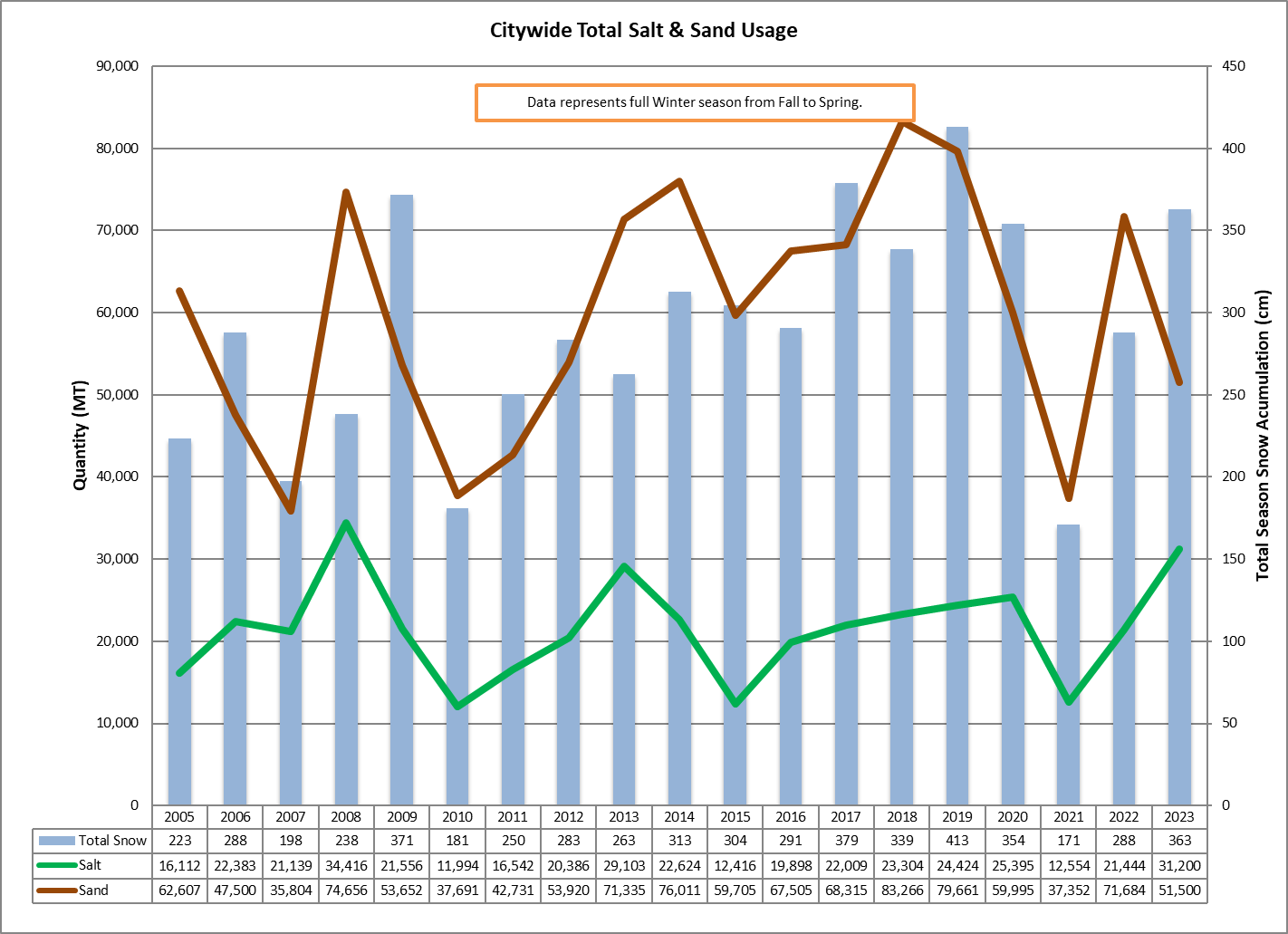Salting and Sanding

2023 Changes to Winter Road Maintenance Service Levels
All year round, the City of Greater Sudbury maintains more than 3,500 kilometres of municipal roads. We periodically review how our roads are maintained in winter, and how that maintenance aligns with City policy, provincial legislation and environmental best practices.
One such review was completed this summer and the findings were presented to the Operations Committee, a committee of City Council, on August 14.
Find out what's new in 2023
The City has 24/7 road inspection coverage throughout the winter months. Road supervisors monitor the state of our roads and maintain them in a safe manner that meets our winter maintenance service levels. A special focus is being paid to roads that changed maintenance class.
To keep our roads safe in the winter months, the City uses both sand and salt (sodium chloride) to help make winter travel safe for motorists and pedestrians throughout the City. What we use to keep the roads from being slippery depends on the temperature and the type of road.
Temperature and Type of Application
| Temperature | Type of Application |
|---|---|
| Zero to minus 12 degrees Celsius | Road salt in the form of brine (salt/water solution) or rock salt is typically applied to achieve bare pavement conditions. |
| Colder than minus 12 degrees Celsius | Sand is applied when temperatures are too cold for salt to be effective. |
| Zero to minus 12 degrees Celsius | Road salt in the form of brine (salt/water solution) or rock salt is typically applied to achieve bare pavement conditions. |
Type of Road and Application
Local road information including Class number
| Type of Road | Type of Application |
|---|---|
|
Class 1-3: Main Arterial or Secondary Collector Routes |
|
|
Class 4-6: Rural and Residential Roads |
|
|
Bridge Decks |
|
Impact of Road Salt on the Environment
The City's use of road salt is relatively low when compared to other jurisdictions in Ontario. The graph below shows the City uses about three times more sand than salt each year:

Citywide Total Salt and Sand Usage

The City mitigates the impact of road salt on the environment by minimizing its use of salt while still maintaining safe roads for motorists and pedestrians. This has been done through many efforts such as:
- Periodic review of industry best practices;
- Continuous education and training of City and Contract personnel;
- Periodic updating of the City's Salt Management Plan;
- Optimizing responses to winter weather events;
- Reducing the number of roads that received salt in accordance with the City's winter maintenance policy;
- Improving salt application equipment; and
- Increasing public awareness of how road salt is used in the City.
